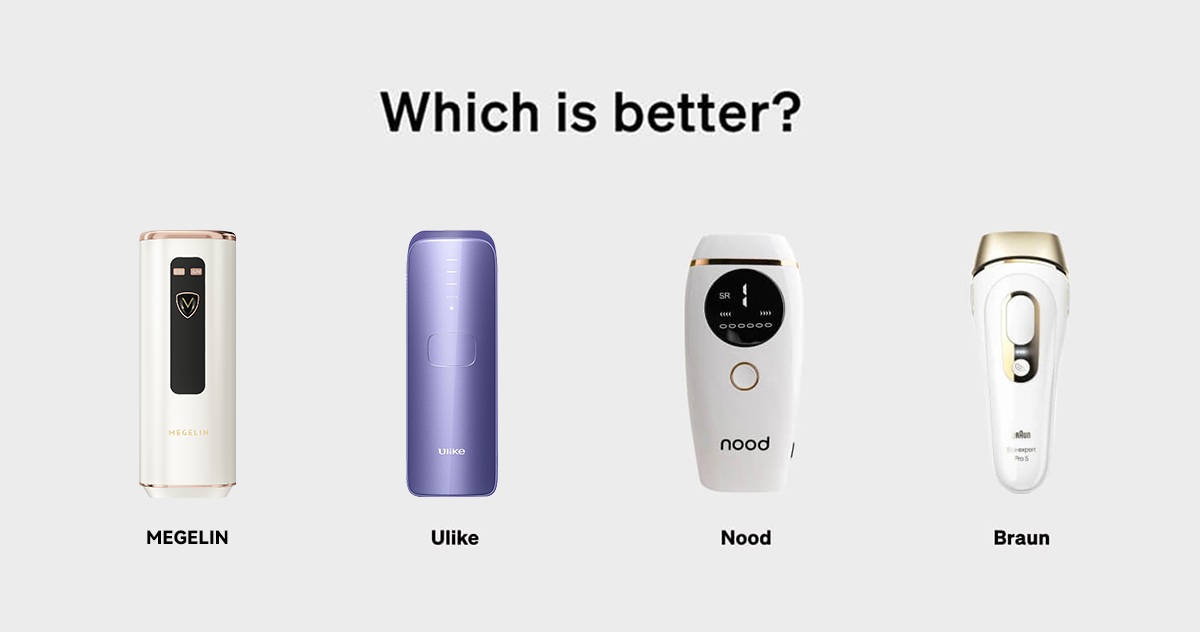
Can Red Light Therapy Really Help with Cellulite? Find Out Here
megelinbeautyRed light therapy for cellulite is a promising, non-invasive technique that enhances skin appearance by using specific wavelengths of light to target cellulite. This method fosters smoother, more youthful skin texture and is a safe, convenient alternative to traditional treatments, appealing to those seeking non-invasive options. With cellulite affecting nearly 90% of women, effective treatments are highly relevant. This article explains how red light therapy works, its applications in professional and home settings, and provides practical tips for effective use. By understanding and utilizing red light therapy, individuals can make informed decisions to improve their skin health and reduce cellulite.
Understanding Cellulite
What is Cellulite?
Cellulite is a common skin condition where fat deposits push against the connective tissue beneath the skin, creating a dimpled or lumpy appearance [1] [2]. Often described as having an orange-peel or cottage-cheese texture, cellulite primarily affects areas like the buttocks, thighs, and abdomen [2]. Despite being harmless and medically considered purely cosmetic, its presence can be a significant aesthetic concern for many [3].
What Causes Cellulite?
The exact mechanisms behind cellulite formation are complex and involve various factors. One significant factor is the structure of the connective tissue and fat cells beneath the skin. In women, fat cells and connective tissues are arranged vertically, allowing fat cells to protrude more easily, which is less common in men who have a criss-cross pattern in these tissues [1] [2] [4]. This difference in anatomical structure is why cellulite is more prevalent in women than in men [1].
Hormonal factors also play a crucial role in cellulite development. Hormones such as estrogen, insulin, and thyroid hormones contribute to the formation of cellulite by affecting fat distribution and connective tissue health [2] [3]. For instance, changes in estrogen levels during puberty, pregnancy, and menopause can trigger or exacerbate cellulite [3].
Genetics and lifestyle choices are additional contributors. Genetic factors can determine one's predisposition to cellulite, influencing aspects like fat distribution, metabolism, and circulatory efficiency [3]. Meanwhile, lifestyle factors such as diet, activity levels, and smoking can impact the severity of cellulite. Diets high in fat, carbohydrates, and salt, combined with low fiber intake, may increase the risk and appearance of cellulite [2].
Understanding these factors can help in managing and potentially reducing the appearance of cellulite, although complete elimination might be challenging due to its multifactorial nature.
How Red Light Therapy Helps with Cellulite
Mechanism of Red Light Therapy
Red light therapy, a non-invasive treatment, employs low-level wavelengths of red light to penetrate the skin, stimulating cellular activity. This therapy enhances mitochondrial function in cells, particularly the fibroblasts that produce collagen and elastin [5]. Collagen and elastin are crucial proteins that provide structure and elasticity to the skin, making it firmer and reducing the puckered appearance of cellulite. Additionally, red light therapy boosts blood circulation, which helps in nourishing skin cells and removing waste products [6]. This increased circulation can break down the fat cells that contribute to the dimpling effect of cellulite.
The therapy also stimulates the production of adenosine triphosphate (ATP), enhancing cellular metabolism and energy, which are vital for maintaining healthy skin and reducing the appearance of cellulite [5]. Moreover, some studies suggest that red light therapy can cause fat cells to release lipids, effectively shrinking them and reducing the severity of cellulite [5].
Scientific Evidence
Numerous studies support the efficacy of red light therapy in managing and reducing cellulite. Research published in the Journal of Cosmetic and Laser Therapy observed significant improvements in skin texture and a reduction in thigh circumference after red light therapy sessions [6]. Another study in the Journal of Dermatological Treatment corroborated these findings, showing enhancements in skin elasticity and firmness after treatment [6].
Further evidence comes from a 2020 study that combined red light therapy with mechanical massage, noting a substantial decrease in cellulite appearance among participants [6]. This combination therapy underscores the potential of integrating red light treatment with other modalities to enhance skin health and appearance.
In clinical trials, participants undergoing red light therapy experienced notable improvements in skin condition and a reduction in cellulite, with some studies showing up to a 30% decrease in cellulite appearance after regular sessions [6] [5]. These studies highlight red light therapy's role not only in aesthetic improvement but also in promoting deeper biological changes beneficial for skin health and cellulite reduction.
Using Red Light Therapy at Home
Selecting the Right Device
When considering red light therapy at home for cellulite reduction, selecting the appropriate device is crucial. Individuals should look for devices that emit light at wavelengths specifically between 630-670 nanometers, as these are most effective for penetrating skin and affecting fat cells. It is essential to choose FDA-approved red light therapy devices to ensure safety and efficacy. Additionally, the size of the device matters; larger panels can cover more area and are suitable for treating larger body parts like thighs and buttocks.
Step-by-Step Usage Guide
- Preparation: Begin by cleaning the targeted area of skin to remove any lotions or cosmetics that might reflect or absorb the light, reducing effectiveness.
- Setting Up the Device: Position the device directly against the skin or at a small distance, following the manufacturer's recommendations. Ensure the device is stable and aimed at the area of cellulite.
- Duration and Frequency: Typical treatment sessions last between 10 to 20 minutes. Consistency is key, so aim to use the red light therapy device at least three to five times a week. It's important to adhere to a regular schedule to achieve optimal results.
- Post-Treatment Care: After each session, hydrate the skin with a moisturizer that does not contain light-reflecting ingredients. Hydration is vital for maintaining skin elasticity and maximizing the benefits of the treatment.
- Monitoring Progress: Documenting progress with before-and-after photos can be motivating and help gauge the effectiveness of the treatment over time. Adjustments to duration or frequency can be made based on observed results.
By following these steps, individuals can effectively use red light therapy at home, potentially reducing the appearance of cellulite and improving the overall health and appearance of their skin.
Conclusion
This exploration of red light therapy for cellulite highlights its effectiveness in improving skin texture without invasive procedures. Understanding cellulite's causes and the benefits of red light therapy, whether used professionally or at home, emphasizes the importance of consistent treatment. Combining red light therapy with a healthy lifestyle, including diet and exercise, can enhance overall skin health. Embracing this therapy as part of a comprehensive strategy for smoother, firmer skin reflects an informed approach. The potential for significant results encourages further research and innovation in non-invasive treatments, offering hope to those affected by cellulite. Red light therapy stands out as a promising ally in the journey towards better skin health and self-care.
FAQs
1. Is red light therapy effective in treating cellulite?
Red light therapy can enhance fibroblast activity, which in turn increases collagen production and improves skin firmness in the treated areas. This may lead to a reduction in the appearance of cellulite. However, it is important to note that while red light therapy can improve the look of cellulite, it does not completely eliminate it.
2. Can red light therapy tighten sagging skin?
Yes, red light therapy can help tighten sagging skin. It promotes the production of elastin, which enhances skin firmness and elasticity. This is particularly beneficial for areas prone to sagging, such as the neck. Additionally, it can reduce inflammation and aid in the healing of acne and scars.
3. What is considered the most effective treatment for cellulite?
The most effective cellulite treatment often involves a combination of several therapies. Options include laser and radiofrequency treatments, which target cellulite at a deeper level, acoustic wave therapy, massage techniques, and even surgery. A multi-treatment approach is typically recommended for optimal results.
References
[1] - https://my.clevelandclinic.org/health/diseases/17694-cellulite
[2] - https://www.medicalnewstoday.com/articles/149465
[3] - https://www.macom-medical.com/blogs/news/the-ultimate-guide-to-cellulite-every-myth-debunked
[4] - https://www.endosystems.us/endermologie-cellulite-treatment-blog/endosystems-guide-understanding-treating-cellulite/
[5] - https://platinumtherapylights.com/blogs/news/red-light-therapy-for-cellulite-does-it-really-work
[6] - https://sunhomesaunas.com/blogs/saunas/red-light-therapy-for-cellulite-does-it-really-work
[7] - https://lifeprofitness.com/blogs/news/red-light-therapy-for-cellulite
[8] - https://mitoredlight.com/blogs/mito-red-blog/how-to-use-red-light-therapy-for-reducing-cellulite









